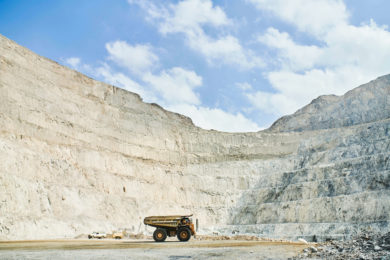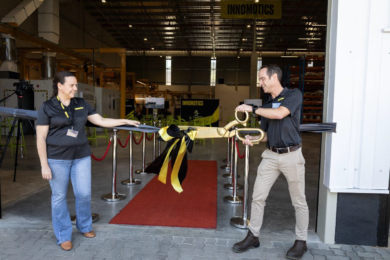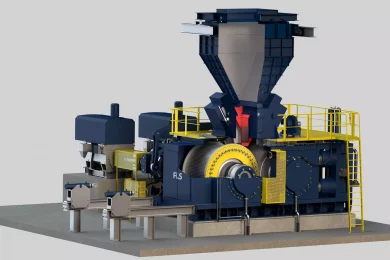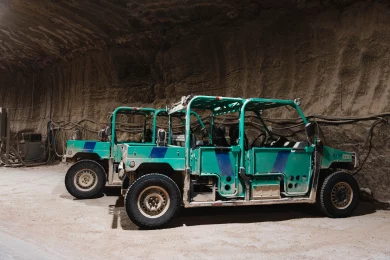Centamin, the LSE and TSX listed gold miner and the owner and operator of the Sukari Gold Mine, Egypt’s largest and first modern gold mine, as well as one of the world’s largest producing gold mines, has published its Decarbonisation Roadmap to 2030. Sukari has both open pit and underground operations and produced 440,974 oz in 2022.
Martin Horgan, Centamin CEO: “Today is an important moment in our journey and we’re pleased to detail our interim decarbonisation roadmap to 2030. This presents a responsibility and an opportunity to be accountable in our vision and our pathway to becoming a low carbon operator. Our vision for a low carbon future is a mining business with sources of onsite and imported renewable energy, reductions in absolute energy consumption through operational efficiencies and creative new technological solutions, staged electrification of our mobile fleet and increased recycling in our supply chain.”
He adds: “In 2022, we studied opportunities to reduce the operational emissions of Sukari over the life of mine, including sourcing clean and lower carbon power through connection to the national grid and further expansion of our onsite renewable energy production. We have set an interim climate target of a 30% reduction in our Scope 1 and 2 greenhouse gas emissions by 2030, compared to a 2021 base-year. This would put us on a Paris-aligned trajectory to limit global warming to ‘well below’ 2°C by 2050 and we continue to pursue efforts to limit the increase further to 1.5°C.”
This is a Group target recognising that at present the company’s sole operating asset, the Sukari Gold Mine, accounts for 99% of the Company’s total Scope 1 and 2 GHG emissions and is therefore the focus of its climate transition strategy. Broadly the company’s climate transition strategy for operational GHG emission reduction comprises renewable electricity – sourcing clean power for its operation through the procurement or development of renewable energy supply; low carbon power sources – switching to lower carbon fuels, together with electrification as an alternative to diesel use applications; and energy efficiency – continuous work to optimise and improve the energy efficiency of all its processes.
In 2022, opportunities were studied and assessed to reduce the operational GHG emissions at Sukari over the life of mine (approximately 14 years). In the short-term, the immediate focus is on the identification and delivery of projects that will effectively reduce operational Scope 1 and 2 GHG emissions. In 2022, opportunities were studied and assessed to reduce the operational GHG emissions at Sukari over the life of mine (approximately 14 years). Over the longer-term, the company it recognises “the need to collaborate with our supply chain to reduce Scope 3 GHG emissions, and more broadly, consider the social and environmental inter-relationships associated with our decarbonisation journey.”
In the absence of carbon abatement, Scope 1 and 2 GHG emissions in 2030 at Sukari are projected to be 550,819 t of carbon dioxide equivalent (tCO2-e). This business-as-usual scenario is equivalent to a 14% increase in absolute emissions compared to the 2021 base-year, primarily associated with higher demand on stationary power consumption as Sukari continues to be optimised. Execution of the decarbonisation roadmap is projected to reduce Scope 1 and 2 GHG emissions by 30% compared to the 2021 base-year, resulting in approximate emissions of 335,595 tCO2-e in 2030.
The carbon abatement projects that underpins the interim target of a 30% reduction in operational Scope 1 and 2 GHG emissions by 2030 are two-fold and are focussed on the stationary power demand. In 2022, the Sukari 36MWDC (30MWAC) solar plant was successfully commissioned. Adding an additional 20MWAC extension to the existing solar infrastructure (totalling 50MWAC) would fully meet the baseload power demand of the mine during peak daylight hours. The execution strategy involves installing 5MWAC each year over four years from 2024. The estimated total capital cost for the 20MWAC solar power expansion is between $25 million and $35 million, allowing for inflation and including earthworks, infrastructure connection and battery storage.
Following recent upgrades to Egypt’s power distribution infrastructure, a high voltage grid connection was extended through Marsa Alam, the local city to Sukari, located approximately 25 km away from site. Establishing a 50MWAC connection to the national grid, combined with the existing onsite solar plant, would fully meet the electricity needs of the mine without the requirement for onsite thermal power generation using diesel fuel.
Grid electricity is partly generated from renewable sources (12% in 2021), with the remainder from non-renewable fuels, predominantly natural gas. The Egyptian government is planning to increase renewable energy generation to 40% by 2030 as published in their Nationally Determined Contributions. “Our 2030 interim target accounts for an increase in renewable energy sourced through the grid, from 12% in 2021 to 38%.”
The company is targeting grid connection in 2024, and is currently undergoing a tender process for project construction and supply tariff. The early estimated capital costs are between $20 million and $30 million.
In Q4 2022, Sukari successfully commissioned the 36MWDC (30MWAC) solar plant and 7MW battery energy storage system, providing a secondary energy source to Sukari and increasing the renewable make-up of site power generation to 20%. This solar plant will save up to 70,000 litres of diesel per day, equivalent to an annual reduction of 60,000 tCO2-e in Scope 1 GHG emissions.
At Sukari, various efficiency initiatives have also been executed leading to further GHG emission reductions, including:
- Refitting the 48 truck haulage fleet with the lighter weight and more efficient, high-production trays (30 trucks were fitted in 2022; 18 trucks in 2021), resulting in an 8% reduction in fuel consumption per tonne of material moved
- Optimisation of the fine grind process within the comminution circuit in the processing plant
- Replacement of older underground trucks and loaders with more efficient units, and
- LED light bulb conversion across the mine site
Collectively these initiatives decreased our Scope 1 GHG emissions in excess of 43,000 tCO2-e in 2022, at an equivalent capital carbon abatement expenditure of $12.6 million.
The company adds that its commitment to decarbonisation goes beyond the 2030 interim target and carbon abatement projects detailed above. “Several additional opportunities to reduce our GHG emissions have been identified but require further technical and economic studies. Importantly, grid connection would enable Sukari to introduce a range of lower-carbon technologies, including electrification of the mobile mining fleet and ongoing energy efficiencies. These are currently excluded from our interim target.”
Operation of the mobile mining fleet represents approximately 50% of GHG emissions at Sukari. Opportunities to switch from diesel use to power sourced from lower carbon fuels include:
- Hybrid diesel-electric shovels to replace existing open pit face shovels
- New generation hybrid diesel-electric loaders to replace existing underground fleet
- In-pit crushing and conveyors to replace open pit haul trucks for delivery of ore to the mill, and
- Electrification of the underground load and haul fleet
For each of these opportunities, the technology is commercially available and viable and indicates a positive return on investment within the operational life of Sukari.
At Sukari, 71% of stationary energy consumption is associated with comminution: the grinding and crushing of rock. Through various optimisation initiatives, it believes there is opportunity to fragment particles using less energy than has conventionally been the case. Other opportunities to improve the energy and fuel efficiency of its processes include:
- Development of a fixed plant power management and monitoring system to optimise energy generation and distribution
- Conversion to variable frequency drives for pumps and intermittent rather than continuous operation
- Utilisation of smaller generators in combination with existing thermal power plant, and
- Open pit fleet management and haul road optimisation.
Finally, Centamin says it is committed to mitigating the impact of the supply chain GHG emissions, while recognising that the nature of Scope 3 GHG emissions are largely outside the company’s direct control. The majority of Scope 3 emissions (98%) are upstream to the Sukari operation and relate to purchased goods, services and capital expenditure.
“Initial actions are focused on collaboration with the suppliers to first understand the sources of Scope 3 GHG emissions, then identify how these can be most effectively abated. Preliminary studies of Sukari’s supply chain indicate that approximately 20 of the suppliers generate up to 75% of the Scope 3 GHG emissions. The Company is currently working collaboratively with the key suppliers to verify the carbon footprint of their value chain and opportunities for abatement.”
Scope 3 GHG emissions are not yet included in its interim target for carbon abatement. The aim is to set targets for a reduction in Scope 3 GHG emissions by the end of 2024.









